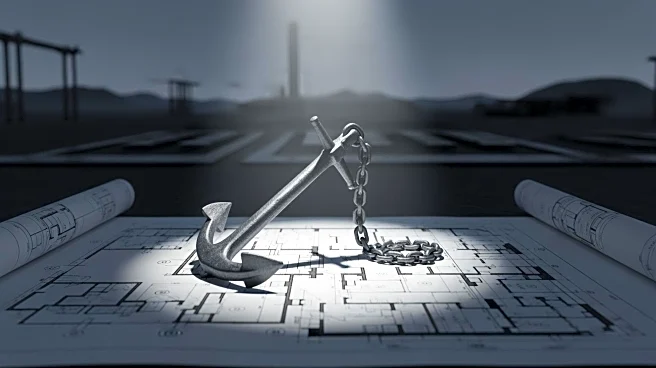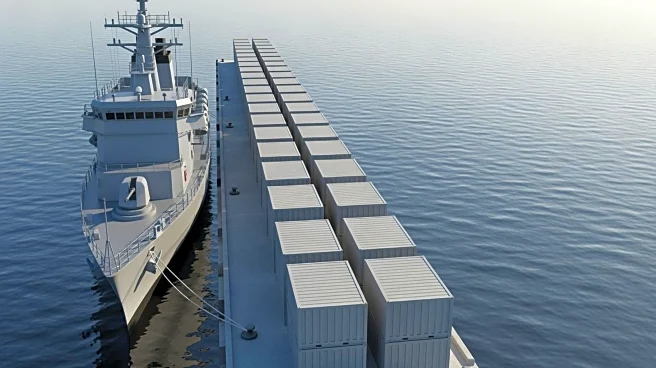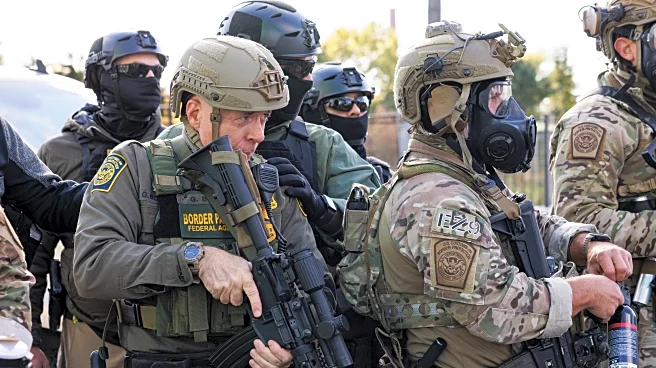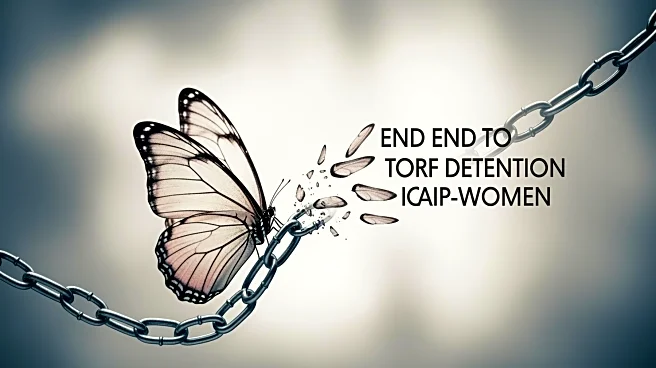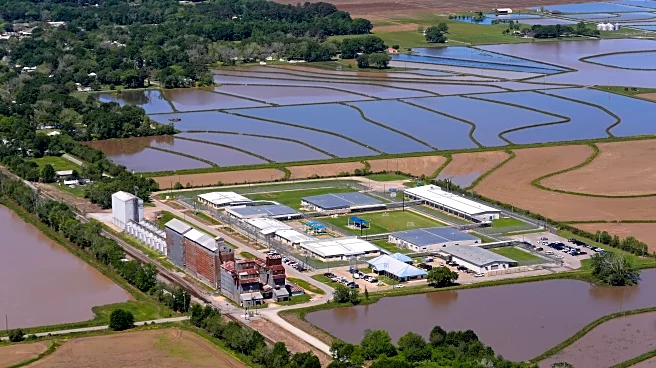What's Happening?
The Trump administration is leveraging the US Navy to accelerate the construction of migrant detention centers across the United States. The Department of Homeland Security is channeling $10 billion through
the Navy to facilitate this initiative, aiming to build facilities capable of housing up to 10,000 migrants each. The centers, primarily soft-sided tents, are expected to be constructed in several states, including Louisiana, Georgia, and Pennsylvania. This move is part of a broader effort to enhance immigration enforcement and increase detention capacity, following an uptick in immigration arrests.
Why It's Important?
The use of military resources to support domestic immigration enforcement represents a significant shift in policy, highlighting the administration's commitment to expanding detention capabilities rapidly. This approach may streamline the contracting process, allowing for quicker construction and operational readiness. The initiative reflects ongoing debates about immigration policy and the role of military assets in civilian law enforcement, potentially impacting public perception and policy discussions surrounding immigration enforcement.
What's Next?
As construction begins, the administration will likely face scrutiny from various stakeholders, including civil rights groups and political leaders. The expedited process may lead to challenges in ensuring compliance with federal detention standards, as seen in previous facilities. The administration's focus on increasing detention capacity may influence future legislative and policy decisions, shaping the landscape of immigration enforcement in the United States.
Beyond the Headlines
The collaboration between DHS and the Defense Department raises questions about the ethical implications of using military resources for civilian law enforcement. This development may prompt discussions about the balance between national security and civil liberties, as well as the long-term impact on military-civilian relations. The initiative also underscores the complexities of immigration policy, highlighting the need for comprehensive solutions that address both enforcement and humanitarian concerns.
